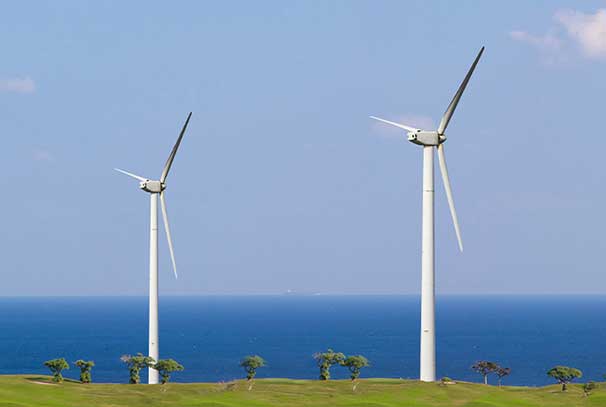Author: Robert McMillan

Windfarms are getting bigger, harder to build and more challenging to insure. This situation only makes it more imperative to understand and manage the risks, by finding ways to communicate insurers’ loss experience back to the industry.
This communication can feed the essential research and development (R&D) that's needed to drive improvements in reliability, efficiency and safety.
Growth in the wind energy industry has stalled in recent years but appears to be on the rebound in 2023. According to figures from the International Energy Agency, annual global onshore wind capacity additions are expected to jump 70% in 2023*, breaking the 2020 record. Meanwhile, global manufacturing capacity is expected to increase in line with demand to hit 120-140 gigawatts a year by 2025. But that's still only one-third of what's required in 2030 to meet net-zero targets.
Against this backdrop, there's been a strong political push to install more turbines offshore. Building huge windfarms out at sea is more technically challenging and expensive, but it offers the twin benefits of more power from more consistent and stronger winds and fewer protests from citizens upset at the effect on the countryside.
Developers in Europe continue to see the region as crucial to the industry’s growth and development — both in terms of building out capacity and developing bigger and stronger turbines. Governments need a dependable resource, able to withstand violent storms out at sea and remain on call at all times. The push to develop the biggest rotors, generators and annual expected production (AEP) has been ever present within wind turbine R&D, alongside targets to reduce costs below the price of coal power and become the cheapest form of energy.
These factors have led to some concerns among the industry’s insurance providers. Whilst the increase in the number and size of projects results in handsome premiums to the market, there's also the consideration of increased limits and potential issues these projects may face. For much of the market, wind turbines — particularly offshore — are a new risk and, with the speed of development and ever-increasing size of the turbines, there are fears the market may not be able to keep up.
Balancing wind turbine production and innovation
With fast-rising demand for offshore projects around the world, there's an inevitable temptation for some manufacturers to invest less in R&D and put that energy and expense into the mass production of existing turbine designs. There's a certain logic in this. It could provide a stable environment for manufacturers to grow rapidly, allowing them to offer higher-quality turbines with fewer potential problems. Standardised products are also easier and cheaper to insure. This logic is a nice thought, but it would come with its own challenges.
What would happen to the design engineers who have so capably taken the industry to where it is? The engineers looking to design the next best model of turbine are the same ones who have driven the improvements in performance, reliability and safety we've seen in recent years. Indeed, new models are often developed by testing new features out on current models. Where would we be without fall arrest systems integrated into ladders; internal elevators; variable stall blades; helicopter operations; wind management software; and more recently, typhoon certification?
Investment in R&D is essential, but that's not to say improvements cannot be made. In particular, innovations that are critical to performance, quality and safety need more robust and professional oversight. Global standards offer great assistance in this area, but they need to be planned into the full process. Reducing issues by increased onshore checks in design and manufacture may offer reductions in offshore or in field working. This oversight may require better training and knowledge sharing among personnel — which isn't cheap. I say this because there's an expectation from the operators that the products don’t just appear but appear and perform.
The role of insurers and government in wind farm safety
Insurers can help manufacturers here. They may begin to request the implementation of certain technologies or monitoring aids that they believe may help reduce claims. They can also look to include wordings and clauses within their insurance contracts that may indicate to the clients where major concerns are and where there's a need for further R&D. This shift is already happening: clauses calling for the installation of robust undersea cable protection systems have led to real improvements in this area.
Governments can also help, by reducing some of the bureaucracy around project development. These newly developed machines mean longer, taller, heavier and more logistically challenged projects. The larger construction vessels require deeper ports and more robust facilities, alongside taller and larger capacity cranes, with more use of tandem lifts. Access by road for product delivery to ports from factories requires more thought. These significant planning issues need to be addressed and potentially given governmental support.
Meeting the technical and engineering challenges that come with offshore wind, while meeting the public’s expectations for safety and reliability, won't be simple. For the insurance industry, it may mean bigger and more complex risks — but also the opportunity to help reduce them.


